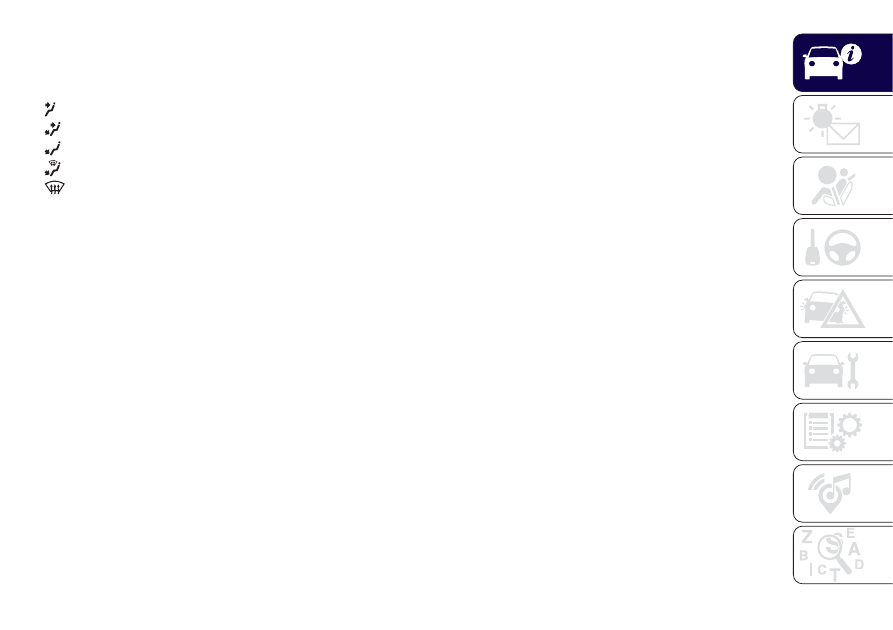Lancia NUOVA YPSILON. Service Manual - part 2

IMPORTANT It is advisable to switch the air recirculation on whilst queueing or in tunnels to prevent the introduction of polluted
air. However, it is better not to use the function for long periods, particularly if there are many people on board, to prevent the
windows from misting.
C - Air distribution knob:
towards the body and the side windows
towards the body, the side windows and the feet
towards the feet only
towards the feet and the windscreen
towards the windscreen only
D - Heated rear window activation/deactivation button. The LED on the button switches on to indicate activation.
E - Fan speed adjustment knob.
Note To stop the air flow from the vents turn the knob to 0.
F - Climate control system compressor on/off button. Press the button to activate the climate control system; the LED on the
button switches on (this enables rapid cooling of the passenger compartment).
ADDITIONAL HEATER
(for versions/markets, where provided)
This device speeds up passenger compartment warming when it is very cold. The additional heater turns off automatically after
the required comfort conditions are achieved.
The heater activates automatically when knob A is turned to the last red section and the fan is activated (knob E turned to at
least 1
st
speed).
The heater only operates if the outside temperature and engine coolant temperature are low. The heater will not activate if the
battery voltage is too low.
23